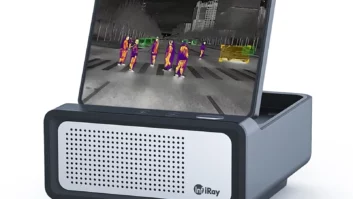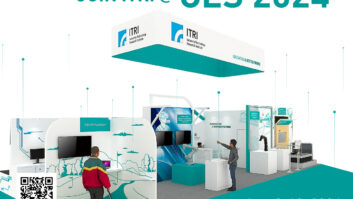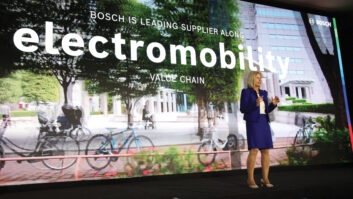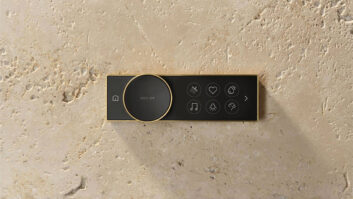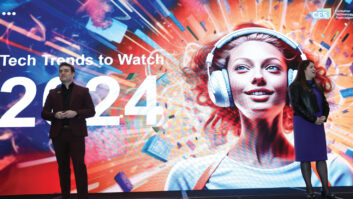LAS VEGAS — General Motors chairman and CEO Rick Wagoner stunned show-goers Tuesday who came to hear the first automaker in the 41-year history of International CES present a keynote speech, when he unveiled the company’s newest “green” fuel-cell concept car, the Cadillac Provoq.
Claiming that cars now include more electronics than steel, Wagoner said it was fitting GM debut the Provoq at International CES. And he formally proclaimed a convergence in the auto and electronics industries, which “is literally transforming the automobile.”
Wagoner drove home the theme that GM is relying on advancing electronics to build environmentally friendly, safer and better cars and he even invited industry members to offer “ideas” to a group of GM technology experts that were briefly introduced during the keynote.
The Cadillac Provoq, a zero-emissions prototype, glided onto the stage at the Venetian hotel at the close of Wagoner’s presentation, with technology such as a solar panel in the roof to power the audio system and the interior lights.
“If the automobile were invented today, I’m pretty sure it would debut right here at CES because more and more that’s exactly what today’s cars and trucks are: highly sophisticated consumer electronics,” Wagoner continued, noting that the electronic content of automobiles has increased by almost 50 percent in the last five years.
Apart from the Provoq, which can drive 300 miles on a single fill of hydrogen at a top speed of 100 miles per hour (30 percent faster than previous fuel-cell cars), GM is working on other advanced car electronics including the following:
- sensing devices in cars that prevent them from crashing into each other, known as vehicle-to-vehicle communications. The car can send out a signal to determine the speed and location of the cars ahead for up to a quarter of a mile so that if, for example, a vehicle six cars ahead of a driver hits the brakes, the driver’s car would automatically start slowing down.
- improvements to On Star so users can use their cellphones to check if they locked the car.
- autonomous cars that use electronic sensors and algorithms to navigate the roads without a driver.
Wagoner quipped that some day you will be able to read your email, eat your breakfast and apply your makeup while commuting to work, “in other words, you could do everything you do now, but do it safely,” through virtually autonomous cars using various electronic sensors. An example of an autonomous car is on display in the Gold Lot of the Las Vegas Convention Center.
Wagoner also outlined many of GM’s efforts to produce “green” cars including GM’s flex-fuel cars that can run on ethanol. GM has more than 2.5 million flex-fuel cars on the road and will increase that to 50 percent of its production by 2012, Wagoner said. Currently, only 1 percent of the 170,000 U.S. gas stations offer hydrogen.
By the end of the year GM will also sell eight hybrid car models and will introduce 16 more hybrids over the next four years, said Wagoner.
He concluded, “In light of society’s legitimate energy and environmental concerns, there can be no doubt that electronics will play an even bigger role in our industry’s second century than it did in our first. We at General Motors believe the future of the auto is extraordinarily bright and truly electronic, and we look forward to claiming that future with the consumer electronics industry.”




